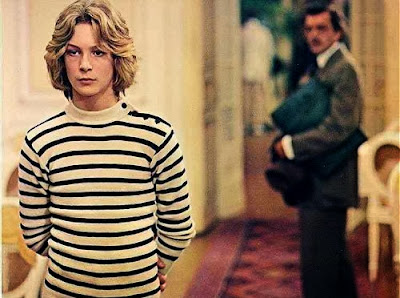Has classical music finally found its contact high?
Mutterings are coming from both sides of the Atlantic about the reluctance of Aldeburgh Festival artistic director Pierre-Laurent Aimard to engage with Britten's music. It is quite right that those mutterings are voiced, but it is also important they do not drown out some of the notably adventurous things that Aimard is doing at Aldeburgh, just one example being his Piano Colours project with kinetic artist Norman Perryman.
Last week's Piano Colours performance at the Aldeburgh Festival was a revelatory experience, and much of the credit for that must go to the Festival's artistic director. My assumption had been that this fusion of visual art and music was the result of Norman Perryman persuading Pierre-Laurent Aimard to experiment with a multi-media recital. But it turns out the collaboration came about the other way round - Aimard saw Perryman's work when their paths crossed at a Concertgebouw concert in Amsterdam, at which the artist was creating graphics for Scriabin's Poem of Ecstasy, and the pianist was playing a Ravel concerto.
Aimard was so impressed with Perryman's kinetic response to Scriabin that he approached the artist about working together, but he was not simply proposing a piano recital with added visuals. In fact the project is a genuine partnership with Aimard devising a programme specifically to meet the specific technical needs of the kinetic artist - Norman Perryman's refreshingly low-tech technique can be seen above and his real time creativity can be experienced in the video below where his kineticism responds to the two piano version of John Adams' Hallelujah Junction. And Aimard's programe for Piano Colours was certainly adventurous; although it contained no Britten it juxtaposed rarely performed spectralists Tristan Murail and George Benjamin with Liszt, Scriabin and Debussy.
Audience reaction to Piano Colourssuggested that classical music has finally found its elusive contact high, with the throng trying to talk to Norman Perryman after the performance reminding me of the Festival Hall green room after a Bernstein concert. In the post-recital talk Norman described how at previous kinetic performances the scales had dropped from the eyes of young concertgoers, allowing them to 'see' contemporary music. This means 'seeing the music' must have a place in every music promoters tool kit; but, and this is where this path becomes very interesting, there is more to this project than just constructing a tool to help contemporary music reach a new audience.
In the post-concert talk Pierre-Laurent Aimard described how he watched Norman Perryman's kinetic visuals during the performance, and went on explain that the visuals actually helped mould his interpretation; while from his side Norman recounted how he took visual and aural cues from the pianist. Which was the eureka moment for me - suddenly I understood that Piano Colours was not a solo piano recital by Pierre-Laurent Aimard with added graphics, but a duet for piano and improvised kinetic art, with the same risks and rewards as a conventional duo performance.
So Pierre-Laurent Aimard and Norman Perryman have created much more than a powerful classical music marketing tool, they have also created a new and notably adventurous performance form. This is a considerable achievement and their pioneering work needs to be taken very seriously. But a little humour never goes amiss; so I will end by suggesting a sure-fire way of bringing Piano Colours to the attention of a very influential audience - a performance at next year's Aldeburgh Festival of Britten's Piano Concerto Op. 13 with Pierre-Laurent Aimard as soloist and Norman Perryman as kinetic artist.
Also on Facebook and Twitter. My ticket for Piano Colours was purchased at the Aldeburgh box office. Any copyrighted material on these pages is included as "fair use", for the purpose of study, review or critical analysis only, and will be removed at the request of copyright owner(s). Report broken links, missing images and errors to - overgrownpath at hotmail dot co dot uk










Comments
BS - Is Britten still an influence on contemporary festivals, and how do you decide how much of his music is programmed today at Aldeburgh?
JR- For the Festival his principles are arguably more important than his music. The principles, which I outlined previously, still guide us in what we do, and they give the Aldeburgh Festival its strong identity. The amount of his music performed depends on what feels right and fits with all the other things we want to do. There is no minimum or maximum.
http://www.overgrownpath.com/2007/10/aldeburgh-has-always-been-about-new.html
It is also worth pointing out that James Weeks is, of course, director of chamber choir Exaudi, and they have a new blog -
http://exaudi2012.wordpress.com/